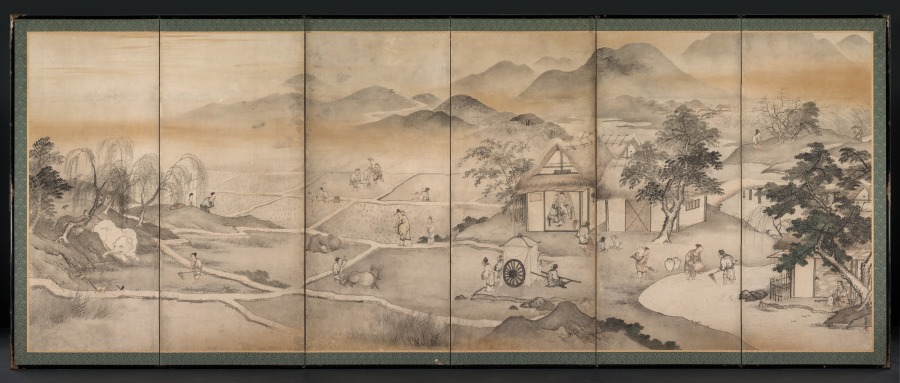| schema:description 10 | "inscription: signature and seal at lower right." |
| schema:description | "tombstone: Emperor Yao Visiting Yu Chonghua, mid- to late 1600s. Kusumi Morikage (Japanese, c. 1620-c. 1690). One of a pair of six-panel folding screens, ink, slight color, and gold on paper; image: 131.9 x 348 cm (51 15/16 x 137 in.); including mounting: 147.3 x 363.7 cm (58 x 143 3/16 in.). The Cleveland Museum of Art, John L. Severance Fund 1968.105...(more)" |
| schema:description | "creditline: John L. Severance Fund" |
| schema:description | "collection: ASIAN - Folding screen" |
| schema:description | "type: Painting" |
| schema:description | "wall_description: One of a pair, this screen shows a section of the narrative of how the Chinese Emperor Yao (about 2356–2255 BC) selected his successor, Yu Chonghua (about 2294– 2184 BC), who would become Emperor Shun. The artist who painted this screen, Kusumi Morikage, trained with Kano Tan’yō (1602–1647), painter-in-residence to Japan’s shogun, the country’s ruler, and was one of his four top students. Despite the conservative subject matter, Morikage’s distinctive sensibility shines through in his playful treatment of the gray and white elephants in the far left panel of the composition. According to legend, Chonghua was so virtuous that in the spring, elephants bounded down from the mountains to help him till the soil with their tusks....(more)" |
| schema:description | "id: 143650" |
| schema:description | "measurements: Image: 131.9 x 348 cm (51 15/16 x 137 in.); Including mounting: 147.3 x 363.7 cm (58 x 143 3/16 in.)" |
| schema:description | "technique: One of a pair of six-panel folding screens, ink, slight color, and gold on paper" |
| schema:description | "culture: Japan, Edo period (1615-1868)" |

